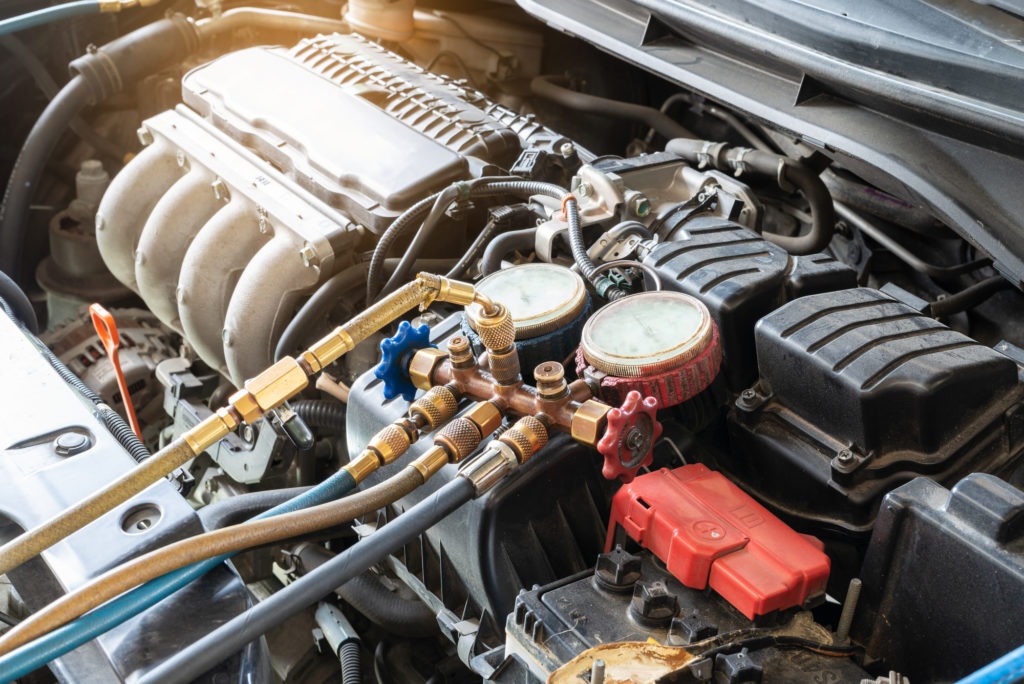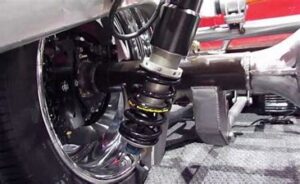The cold wind from your car’s air conditioner (AC) is the only thing that can be more comforting on a sweltering summer day. But it can be irritating and uncomfortable when your air conditioner starts spewing heated air. In your car’s AC system, there may be too much pressure, which could be the cause of this problem. It may be necessary to let the AC pressure out to fix this issue.
We’ll define AC pressure, discuss the reasons why it can be excessive, and show you how to release AC pressure in this detailed article. To help you approach this assignment with confidence, we’ll break down each stage into clear words. Let’s check your car’s air conditioning system now to make sure it is once again blowing ice-cold air.
Table of Contents
Explain AC Pressure In Detail
Learn about AC pressure and its importance before diving into how to release AC pressure in a car. The refrigeration cycle is the basis for how the air conditioning system in your car functions. It entails the movement of a refrigerant, typically a gas through several system elements. To absorb and release heat, this refrigerant changes phases from a gas to a liquid and back to a gas, ultimately cooling the air inside your automobile.
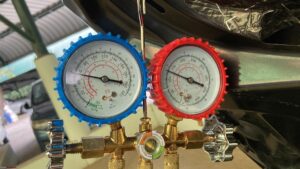
The force or pressure that this refrigerant applies to the air conditioning system is referred to as AC pressure. High-side and low-side pressure are two essential AC pressure values. The compressor and condenser of the air conditioner produce high side pressure, whereas the evaporator and suction line produce low side pressure.
What Are The Causes Of The High AC Pressure?
Let’s explore the potential causes of AC pressure now that we have a firm understanding of its fundamentals. When you want your air conditioner to produce cool, revitalizing air, a car with high AC pressure may instead blow warm air. Let’s summarize the root causes of this issue in plain language.
1. Overcharging:
Sometimes, while the AC system is being recharged, too much refrigerant is supplied. It’s similar to filling a glass to capacity with liquid; as a result, the pressure increases. When adding refrigerant, always follow the manufacturer’s instructions.

2. Defective Compressor:
The AC system’s compressor functions as its beating heart. It can cause high pressure if it isn’t functioning properly. Weird noises weakened cooling, or leaks in the refrigerant are all indications of a failing compressor.
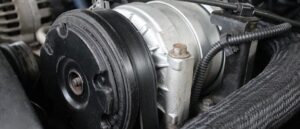
3. Blockages And Clogs:
Consider the pipes in your HVAC system as a network. It would be impossible to breathe if any of these pipelines became blocked with dirt, trash, or even an expansion valve. Because the refrigerant cannot flow freely, pressure increases.
4. Restrictions:
Try sipping a beverage while bending a straw. Yes, it’s harder. The same holds true for damaged tubes or kinks in the AC hoses. Pressure can increase even with condenser fins that are obstructed.
5. Unreliable Pressure Sensors:
The air conditioning system in your automobile comprises sensors that monitor the pressure. If these sensors malfunction and provide false readings, the AC system may believe additional refrigerant is required when it actually doesn’t, leading to high pressure.

Knowing these typical causes will help you identify and resolve issues with high AC pressure in your car. Remember, enjoying cool, comfortable journeys even on the warmest days entails maintaining the health of your air conditioning system.
How To Release AC Pressure In Your Car?
If you think your cooling issues are being caused by high AC pressure, you can safely relieve the extra pressure by following these easy procedures. Remember that handling AC refrigerant can be hazardous, so you must put safety first at all times.
Step 1: Safety First
Make sure you have the essential safety equipment before you start. To protect your skin from the refrigerant, put on gloves, safety glasses, and long sleeves.
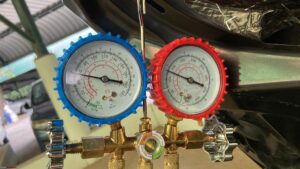
Step 2: Find The Service Ports
Then, find the AC system’s service ports on your automobile. These ports are often found underneath the hood. The low-side port is larger and typically found on the line that runs from the compressor to the evaporator, whereas the high-side port, which is located on the line connecting the compressor and condenser, is often smaller.
Step 3: Start Your Engine And The AC
Start the motor of your car, and crank the air conditioning all the way up. This will enable you to keep an eye on the pressure as you release it.

Step 4: Attach The AC Gauge
An AC pressure gauge should be connected to the low-side service port. You can check the pressure with the help of this gauge to make sure you discharge the proper quantity.
Step 5: Gradually Let Go Of The Pressure
By depressing the valve on the low-side service port while using the gauge, gradually release the extra pressure. It’s important to exercise caution when releasing pressure because doing so too rapidly can harm the system. As soon as the pressure gauge reaches a safe level, stop.
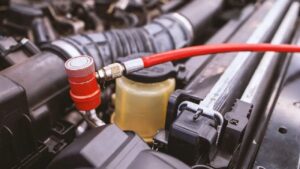
Step 6: Check The AC’s Performance
Check your AC system’s operation when the pressure has been released. Verify that it is producing cooler air and that the pressure is staying consistent within the advised range.
Step 7: If Required, Seek Professional Assistance
It is important to seek the advice of a qualified mechanic if releasing the pressure doesn’t resolve the issue or if you detect a more serious issue with your AC system. Any fundamental issues can be identified and fixed by them.

That’s it! It’s easy to release AC pressure on your own, but safety should always come first. Do not hesitate to seek professional assistance if your AC continues to malfunction after doing this. Stay calm while driving!
Conclusion:
During the sweltering summer months, your car’s air conditioning system is a lifeline, but high AC pressure might impair its operation. You can take charge of your comfort on the road by being aware of AC pressure, its causes, and how to release AC pressure. Always put safety first, take the necessary precautions, and don’t be afraid to ask for expert assistance if you need it. No matter how high the temperature rises, you’ll be riding in comfortable comfort if your AC system is working properly.
We trust that the information provided above will be useful to all of the viewers. Additionally, contact us or feel free to ask if you have any questions. Thank you for reading!
